Following is a selected project highlight from the Share with Wildlife mission to assist all New Mexico wildlife in need, no matter what species.
Project Highlight: Counting Bats and Learning About Their Diet and Movements
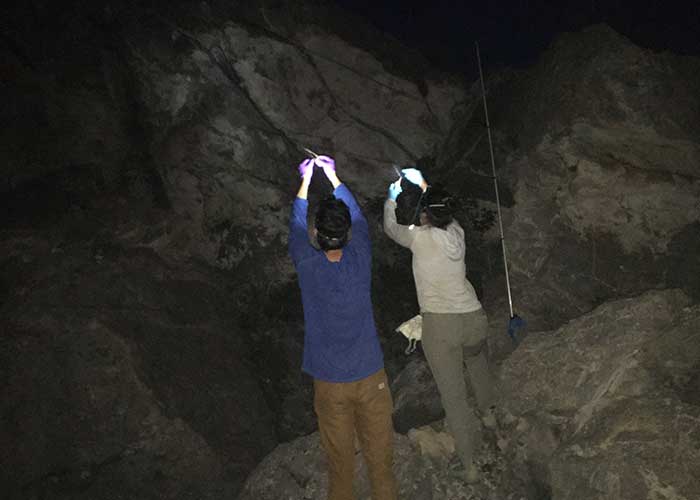
Retrieving long-nosed bats from net. (Ginny Seamster)
How many long-nosed bats use one of the few confirmed roosts for these bats in New Mexico? Where do these bats go once they leave the roost? What do these migratory bats feed on when they are in New Mexico? These are some of the questions that Mallory Davies, a graduate student at Colorado State University, working in the lab of her advisor, Dr. Kathryn Stoner, is trying to answer when it comes to the lesser long-nosed and Mexican long-nosed bat.
The lesser long-nosed bat has been removed from the Endangered Species Act and has to be monitored to track its status and ensure that removal of this species from the list of federally threatened and endangered species remains warranted. The Mexican long-nosed bat is still on this list. These bats migrate to New Mexico from Mexico for the summer. They are known to feed on nectar from agave flowers in New Mexico, but other dietary information is valuable given the comparatively short period of time that flowering food resources are available annually and the fact that agaves only flower once during their life, making it difficult to know how many agaves may flower each year. Mallory and her field technicians set a plastic sheet at the entrance to the roost and collect guano deposited by bats as they leave the roost. The guano can be analyzed both using microscopes and genetic techniques to determine what the bats are eating, other than nectar from agaves.
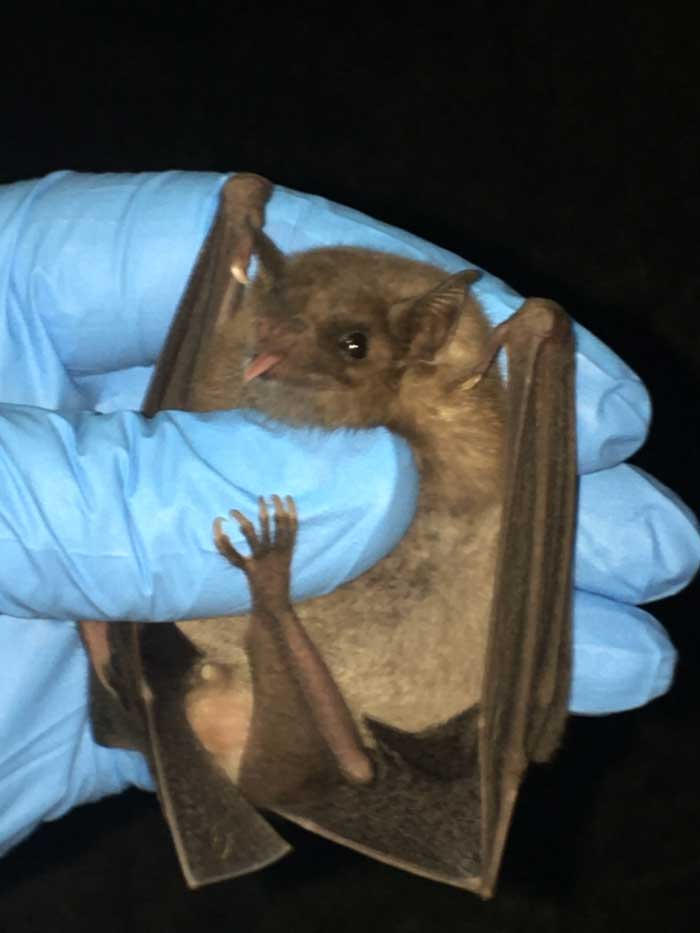
Lesser long-nosed bat. (Ginny Seamster)
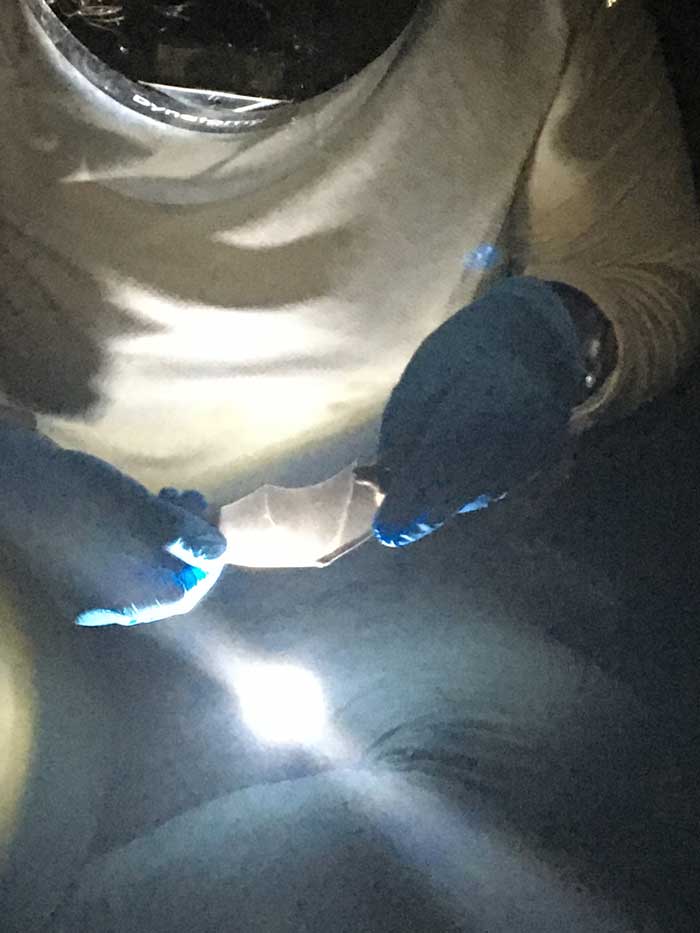
Checking age of bat. (Ginny Seamster)
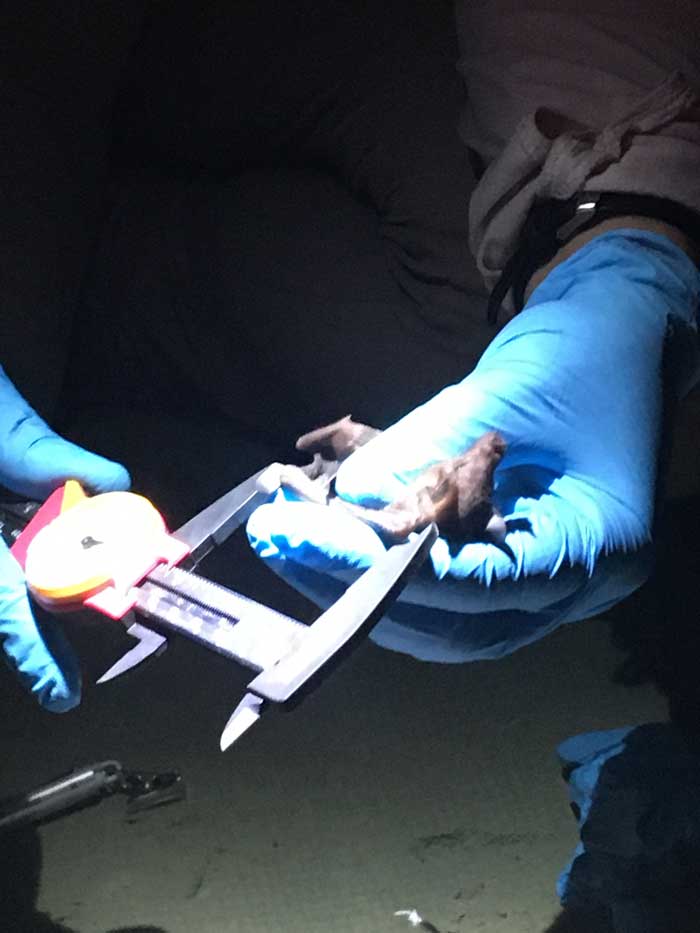
Measuring lesser long-nosed bat forearm. (Ginny Seamster)
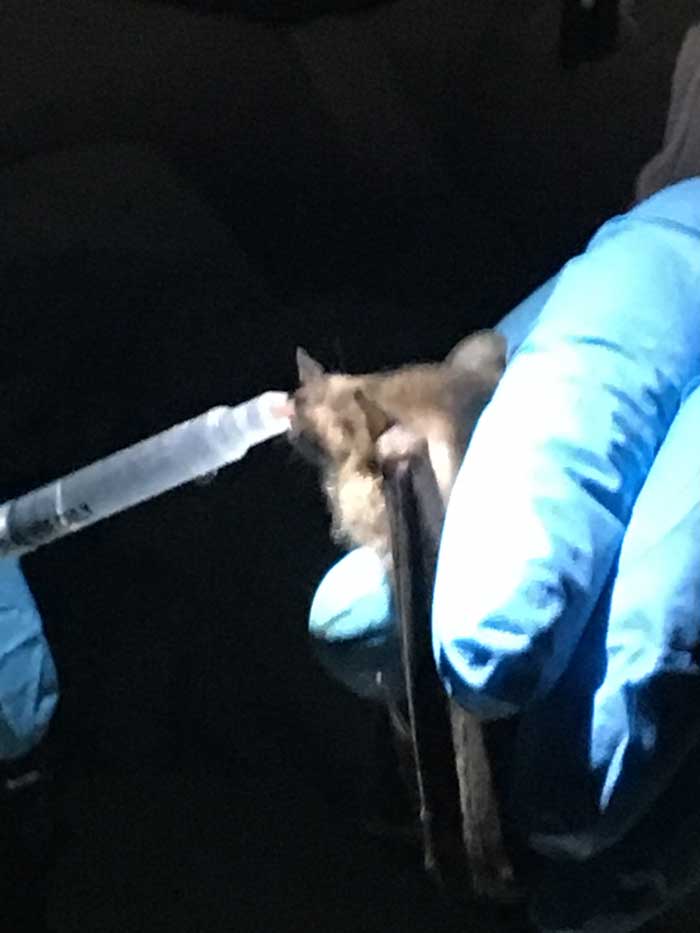
Feeding bat sugar water prior to release. (Ginny Seamster)
An important component of evaluating the status of the lesser long-nosed bat, with respect to its having been removed from the federal list of threatened and endangered species, is assessing how many bats are using confirmed roosts. It is also helpful to know how far the bats travel and how long they may stay at any given roost. Mallory and Dr. Stoner are using cameras that allow them to detect bats at night (i.e., thermal imaging cameras) to count bats leaving the focal roost for their study and are using mist nets to capture some of those bats and insert PIT tags. These tags can be detected with a handheld reader and with an antenna. Antennae have been set up not only at the Stoner lab study site but at other roosts in Arizona and Mexico, allowing for assessment of whether bats are moving between roosts and how many nights a given bat stays at a single roost.
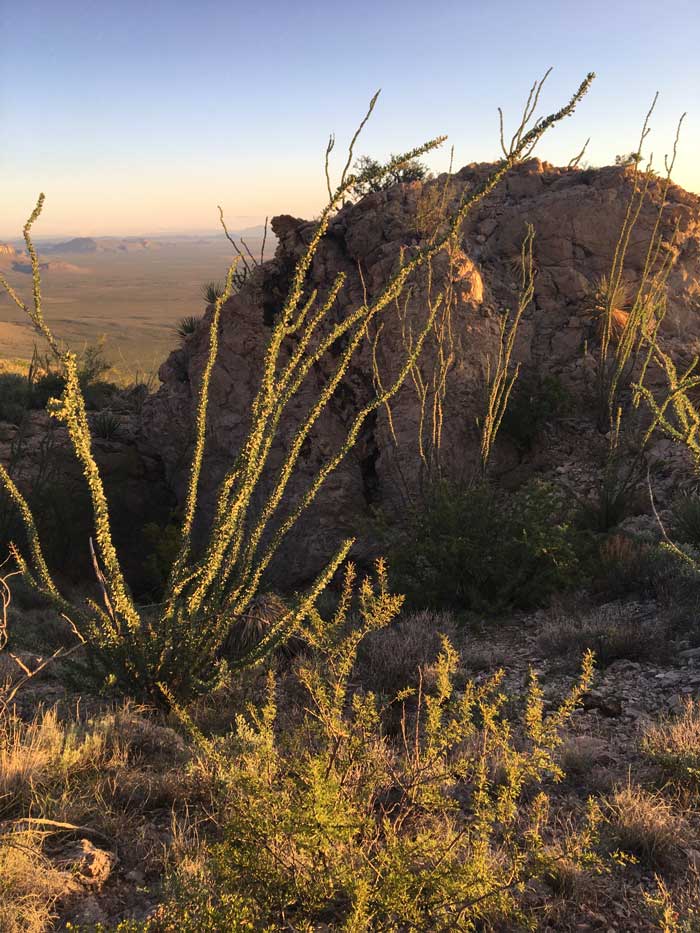
Back entrance to roost. (Ginny Seamster)
Mallory and her field technicians have a very long field season, arriving in New Mexico in May and leaving in October. They hike up to the roost once every week or so to catch bats, collect guano, and check on the camera and other monitoring devices. The hike is hot and strenuous, especially when carrying all the required gear for a night in the field! When not at the roost, they gather data on when agaves are flowering within a 50 km radius of the roost (bats can travel up to 100 km in one night to forage!). They also search for other roosts in southwestern New Mexico and place cameras and acoustic detectors at agaves to determine whether bats are foraging at particular agave patches. There are many hours of video from the camera at the roost to evaluate to determine weekly population counts for the roost and sound recordings that they will be analyzing to assess the total number of species using the roost. A final report from 2021 data collection will be submitted in early summer, 2022.
